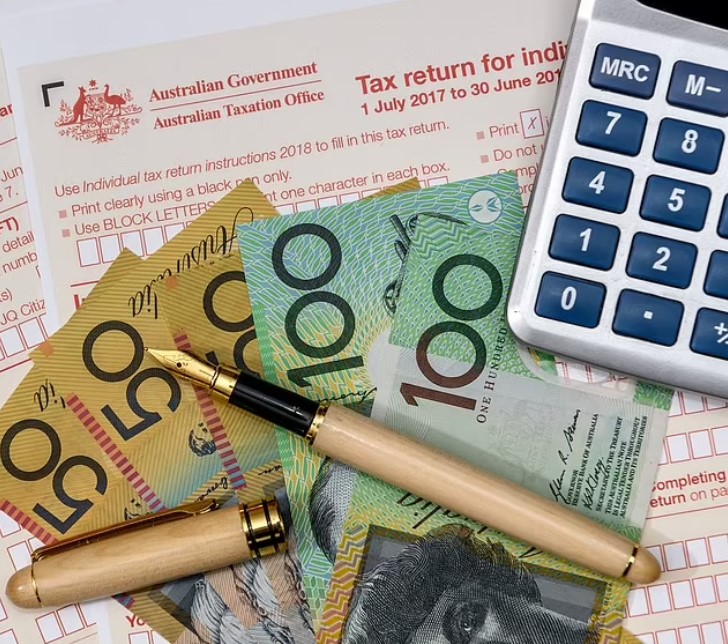In recent years, Australia has been navigating a complex economic landscape, facing challenges ranging from the global pandemic to shifts in international trade dynamics. In response to these challenges, the Australian government has implemented various measures to stimulate economic growth and provide relief to its citizens. One of the key strategies employed has been the introduction of tax cuts, a policy aimed at putting more money into the hands of individuals and businesses. In this article, we will delve into the details of Australia’s tax cut initiative, exploring its objectives, impact on the economy, and the implications for individuals and businesses.
The Rationale Behind Tax Cuts
Tax cuts are a fiscal tool employed by governments worldwide to stimulate economic activity. In the Australian context, the decision to implement tax cuts stems from a multifaceted approach to address economic challenges. By reducing the tax burden on individuals and businesses, the government aims to encourage spending, investment, and job creation, ultimately fostering economic growth.
One of the primary goals of tax cuts is to increase disposable income for individuals, allowing them to spend more on goods and services. Higher consumer spending, in turn, drives demand, which can positively impact businesses, leading to increased production and job opportunities. For businesses, tax cuts mean lower operational costs, freeing up resources for expansion, innovation, and hiring.
| $18,200 or less | 0% | 0% |
|---|---|---|
| $18,201 – $45,000 | 19% | 16% |
| $45,001 – $135,000 | 32.5% | 30% |
| $135,001 – $190,000 | 37% | 37% |
| $190,001+ | 45% | 45% |
Source: https://9news.com.au
The Economic Impact
Australia’s tax cut initiative has had a palpable impact on the nation’s economy. The reduction in personal income taxes has provided immediate relief to individuals, putting more money in their pockets. This extra income has fueled increased consumer spending, particularly in sectors such as retail, hospitality, and entertainment. As a result, these industries have experienced a resurgence, contributing to the overall recovery of the economy.
On the business front, tax cuts have incentivized investment and expansion. Small and medium-sized enterprises (SMEs), which form the backbone of the Australian economy, have been particularly responsive to the reduced tax burden. With more favorable financial conditions, businesses have been able to undertake capital projects, hire additional staff, and invest in technology and innovation.
The job market has also felt the positive effects of the tax cut initiative. Lower corporate taxes, coupled with increased consumer spending, have created a conducive environment for job creation. As businesses grow, they require additional manpower, leading to a decrease in unemployment rates and an improvement in overall labor market conditions.
Social Implications
Beyond the economic realm, tax cuts have social implications, influencing the financial well-being of Australians. The additional disposable income resulting from lower personal income taxes has provided families with more financial flexibility. This, in turn, has contributed to an improved quality of life for many citizens.
Moreover, the tax cut initiative has been designed with a progressive approach, ensuring that those on lower incomes benefit proportionately more. By targeting tax relief towards lower and middle-income earners, the government aims to address income inequality and promote social inclusivity.
Critics, however, argue that the benefits of tax cuts may not be equally distributed and could exacerbate existing inequalities. They emphasize the importance of considering alternative measures, such as targeted social programs, to address specific socio-economic challenges.
Fiscal Challenges and Trade-Offs
While the positive impacts of tax cuts are evident, it is essential to acknowledge the fiscal challenges and trade-offs associated with such policies. Tax cuts, especially in the absence of corresponding reductions in government spending, can lead to budgetary deficits. This raises concerns about the sustainability of such measures in the long run.
To counterbalance the reduction in revenue resulting from tax cuts, governments often need to reassess their expenditure priorities. This process requires careful consideration to ensure that essential services and infrastructure projects are not compromised. Striking the right balance between tax relief and fiscal responsibility is a delicate task that policymakers continually grapple with.
Future Considerations
As Australia moves forward, the success of the tax cut initiative will be closely monitored. Key indicators such as economic growth, employment rates, and government revenue will serve as benchmarks for evaluating the effectiveness of the policy. Continuous adjustments and refinements may be necessary to address emerging challenges and ensure the long-term sustainability of the tax cut strategy.
Australia’s tax cut initiative has proven to be a pivotal component of the nation’s economic recovery strategy. By reducing the tax burden on individuals and businesses, the government has successfully stimulated economic growth, increased consumer spending, and created a conducive environment for job creation. While the benefits are evident, the long-term success of such policies depends on a careful balance between tax relief and fiscal responsibility. As Australia navigates the evolving economic landscape, the tax cut initiative stands as a testament to the government’s commitment to fostering prosperity and financial well-being for its citizens.

